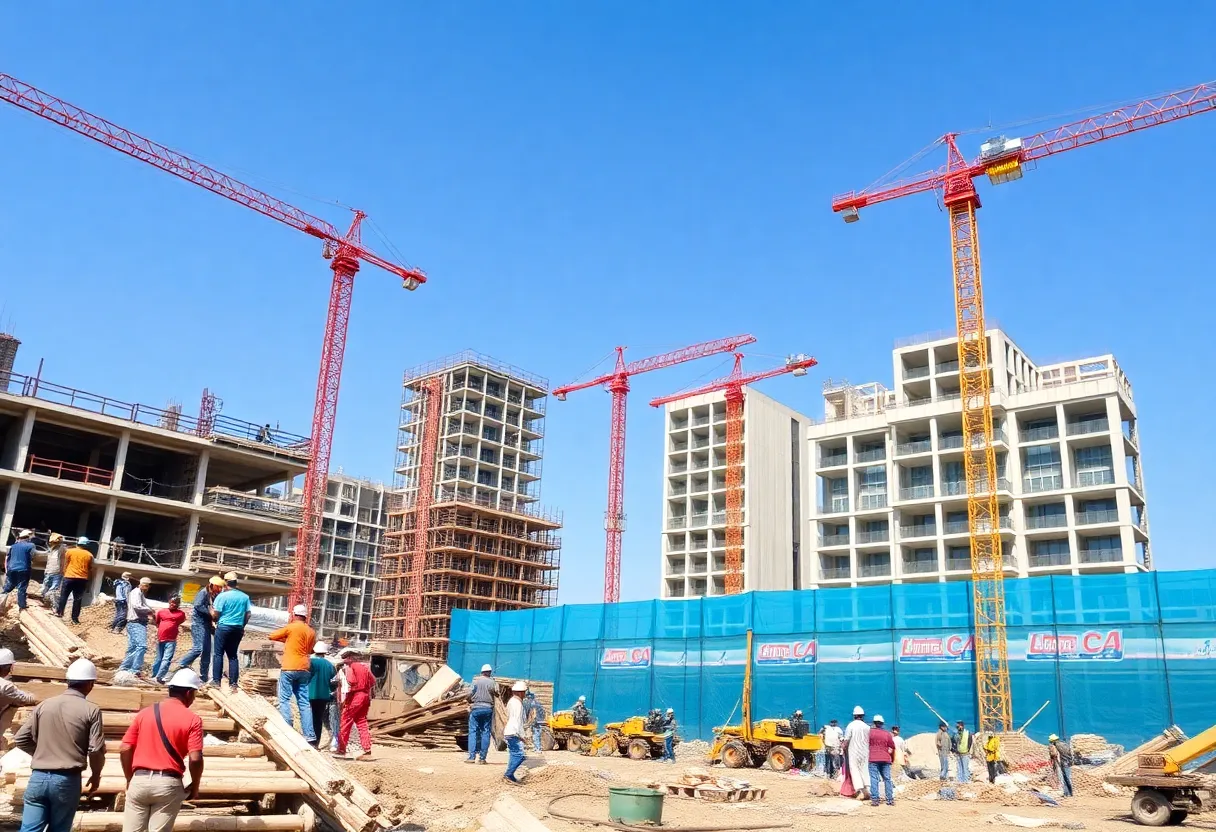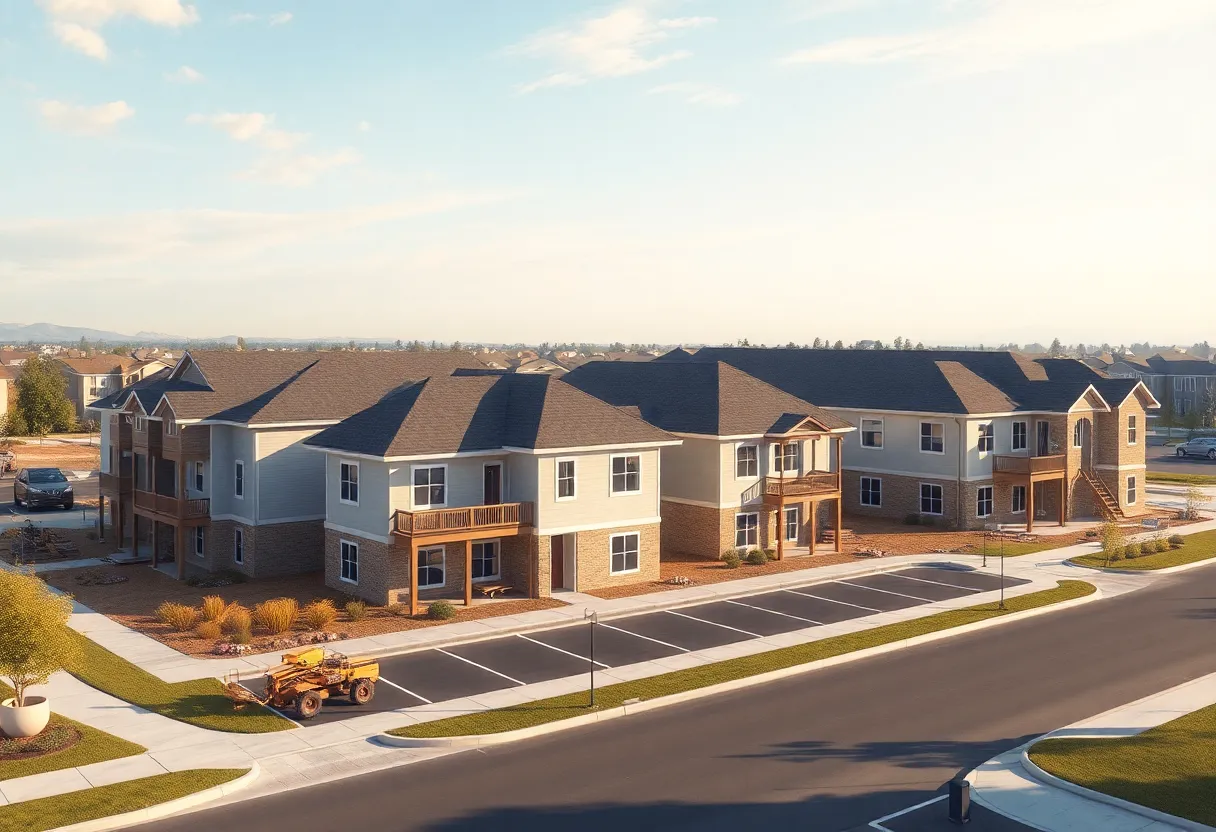United States, August 14, 2025
News Summary
The U.S. construction industry confronts significant challenges as it grapples with rising costs, labor shortages, and economic uncertainty while facing strong demand for housing and infrastructure. Despite a workforce of over 8 million and a projected growth rate of 5.6% in employment, structural issues hinder the industry’s ability to meet demands. The sector experiences remarkable wage growth, particularly in specialized positions, but the lack of support systems like childcare remains a barrier to full participation in the economy. The industry must adapt to these complexities to foster sustainable growth.
U.S. Construction Industry Faces Uncertainty in 2025 Despite Strong Demand
The U.S. construction industry is entering 2025 with high demand but also significant uncertainty. Rising costs, tight labor markets and slower overall spending are combining to make it harder for builders and contractors to meet the need for new homes and infrastructure. At the same time, employment and wages in the sector show notable gains, masking deeper regional and occupational gaps.
Key facts up front
- Construction employment exceeded 8 million jobs by the end of 2024, roughly 6.1% of private-sector employment.
- Median annual earnings for construction workers are about $58,360, roughly 18% above the national median for all jobs.
- Wages in construction rose 15.4% over the past two years, well ahead of the 6.9% gain for other occupations.
- Labor shortages and higher costs are constraining the industry’s ability to respond to demand, even as federal investments and housing needs drive projects.
Employment and labor makeup
The construction workforce includes a wide mix of roles. Laborers are the largest group at about 11.0%, followed by first-line supervisors at 7.7% and carpenters at 7.3%. Electricians make up 7.2%, plumbers 4.6%, and HVAC technicians 3.7%. Other craft roles such as masons, painters and roofers are smaller shares but remain critical to project delivery.
Regional picture
The concentration of construction workers varies sharply by state. Wyoming, Utah, and Idaho show the highest shares of jobs in construction, with Wyoming at about 11.0%, Utah at 9.5% and Idaho at 9.3%. All eight Mountain West states rank among the top ten, reflecting ongoing housing and infrastructure growth there. In contrast, many Northeastern and some Midwestern states report lower shares, indicating more mature local economies and slower construction growth.
Spending, demand and the work pipeline
Demand for new housing and infrastructure remains elevated, pushed by long-standing housing shortages and federal infrastructure investments. However, construction spending has slowed recently due to higher interest rates and overall economic uncertainty. The result is a mixed picture: many projects are planned or under way, but progress and starts are affected by cost pressure and gaps in the workforce.
Wage trends and pay geography
Construction pay has risen faster than in most sectors. The national median of $58,360 puts many workers well above the national median for all workers. After adjusting for cost of living, Illinois leads among states for construction pay, followed by Midwest states such as Minnesota and North Dakota. Several Southern states and some large Sun Belt cities, including parts of Florida and Texas, rank among the lowest on a cost-adjusted basis.
Outlook and growth projections
Jobs in construction are projected to grow about 5.6% from 2023 to 2033, faster than the average for all occupations. That growth will depend on whether firms can recruit and retain enough skilled workers to meet the rising demand for homes, roads and utility work.
Local example: workforce strain and barriers
In one western state dealing with rapid growth, state officials estimate the industry will need about 1,000 new construction workers each year for the next eight years. Nearly all contractors in that state report open positions, mostly for craft roles like operators and mechanics. In addition, limited childcare options are keeping many potential workers from fully joining the workforce, and the state has recently seen a record increase in people entering the labor force.
Challenges ahead
The main challenges for 2025 are clear: hiring enough trained workers, managing rising input costs, and navigating a shifting financing environment. Specialized craft workers can command higher pay, but shortages remain widespread across many job types. How quickly training pipelines, apprenticeship programs, childcare support and pay structures adjust will shape whether the industry can meet current demand without further delays and cost increases.
FAQ
What is the current size of the construction workforce?
The sector had over 8 million jobs by the end of 2024, about 6.1% of private-sector employment.
Are construction workers paid well?
Yes. The median annual wage for construction workers is around $58,360, about 18% higher than the median for all occupations, and wages have risen about 15.4% over the past two years.
Which states have the most construction jobs as a share of employment?
States in the Mountain West lead the list, with Wyoming, Utah, and Idaho among the highest shares of total jobs in construction.
Is construction hiring expected to increase?
Yes. Construction employment is projected to grow 5.6% from 2023 to 2033, faster than the average for all jobs, though growth depends on filling skill gaps.
What is limiting construction growth now?
Key limits include labor shortages, higher material and borrowing costs, and regional differences in demand. Support services like childcare also affect worker participation in some areas.
At-a-glance table: Key features
| Feature | Key data | Notes |
|---|---|---|
| Employment (end of 2024) | Over 8 million (6.1% of private-sector jobs) | Recovery since Great Recession but not to pre-2008 peaks |
| Median pay | $58,360 annually | About 18% above overall median wage |
| Wage growth (2 years) | 15.4% | Much faster than 6.9% for other occupations |
| Projected job growth (2023–2033) | 5.6% | Outpaces average for all occupations |
| Top state concentrations | Wyoming 11.0%, Utah 9.5%, Idaho 9.3% | Mountain West dominates top rankings |
| Common occupations | Laborers 11.0%, Supervisors 7.7%, Carpenters 7.3%, Electricians 7.2% | Craft roles make up the bulk of open positions |
| Primary challenges | Labor shortages, rising costs, slower spending | Childcare and training gaps also reduce available labor |
Deeper Dive: News & Info About This Topic
Additional Resources
- KULR8: Construction Industry Employs 8.7% of Montana Workers
- Montana Right Now: Montana Construction Workers Earn 12th Most in U.S.
- Business Insider: Montana Contractors Face Labor Shortage
- KULR8: Best Paying Construction Professions in Montana
- Wikipedia: Construction Industry





